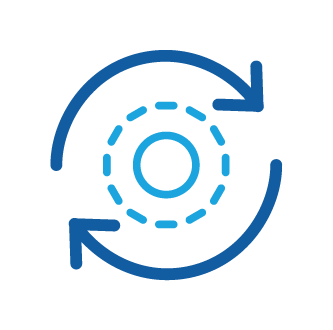
In Part 1 of this blog series, Brent Haumann went back to the basics, revisited the core purpose of communication and introduced the concept of manufactured experiences.
In Part 2 of this blog series, Brent will look at how to manufacture experiences that change customer behaviour
Manufactured experiences: designing from the ground up
A manufactured experience is a complete, ground up redesign of an engagement that is perfectly tailored to meet the customer’s exact needs.
Manufactured experiences incorporate the functional purpose of the engagement in a way that brings awareness of the potential break-out points, such as alternative channels or calls-to-action.
Manufactured experiences drive mutually beneficial behaviour and the result is an improved customer service and a reduced cost to serve.
What does “design from the ground up” mean?
This definition may take the form of a “single minded job to get done” (i.e. one single overarching statement of what we would like the customer to achieve in this phase) or a more refined set of targeted customer outcomes (i.e. a set of more specific customer outcomes that we would like the customer to achieve within this phase).
Map all the existing customer touch points, identify the purpose of the touchpoint and determine whether it achieves the purpose.
Depending on your access to customer engagement data, this may be an actual measured result, or just a gut feel.
For each touch point, answer the following questions:
- What is the purpose of this communication?
- What is the targeted outcome for the customer?
- Does it fulfil the purpose?
Now that you have the ‘as is’ position, you need to shift gears, start from a clean slate and completely reimagine the customer experience you think would motivate the right engagement.
Try not to get bogged down with operational or technical restraints at this stage. Think from the customer’s point of view only.
Depending on the information available, this may even require a co-design session with your customers and stakeholders – though in my experience, I have seen some amazing and effective experiences designed using existing knowledge.
For each experience, determine the following:
- What is the targeted outcome for the customer?
- What are the targeted outcomes before and after this point?
- What information/data is key to enable that outcome?
- How can we best deliver and represent the information?
- What behaviours do we want to encourage?
- How can we drive/incentivise those behaviours?
- How do we measure whether or not we were successful?
Using the answers to these questions, design the ideal experience from the ground-up. This may require a complete re-imagining of the existing experience, as well as a broader understanding of how each touchpoint impacts the rest of the customer journey.
It’s important to note that re-imagining an experience does not always require a “rip-and-replace” of the existing experience, it may just require a repackaging or extension of the current assets.
Manufacturing a frictionless experience
When you manufacture an experience, there are some basic characteristics that must be present, because we know these drive the right behaviour:

Personalisation – this means not only addressing the customer by name, but actually customising the experience based on the customer’s life stage, journey stage, preferences or previous engagement.

Convenience – key to driving engagement is to provide simple, obvious and convenient calls to action that align with the customer’s life. Include these CTAs in-line within the experience, don’t force a break out to another channel.
 Consistency – building trust is a direct result of providing a consistent experience. Meeting expectations and avoiding a schizophrenic experience across the customer journey allows the customer to build a connection to the brand, which lowers the barriers for engagement.
Consistency – building trust is a direct result of providing a consistent experience. Meeting expectations and avoiding a schizophrenic experience across the customer journey allows the customer to build a connection to the brand, which lowers the barriers for engagement.
With these as basic principals, the goal is to take the customer on a journey from the start (receipt of the communication) all the way to the end (achieving the targeted outcomes).
Overcoming challenges
Most organizations have a complex set of systems and processes. Too often, this complexity dominates most of the experience design decisions. System architects often shoe-horn the creative process by limiting the experience options to the available technology, rather than enabling the ideal customer experience.
Try to keep the customer and the targeted outcomes at the core of every design decision, and then use technology to deliver this experience. The reward for getting this right will be far greater than simply sweating your tech assets.
Remember, just like Disney, you are in control of the manufactured experience, so make sure to remove any friction and hide the bad bits in the back-end. Using the Disney example, there must be no loud music and no visible rubbish collection.















